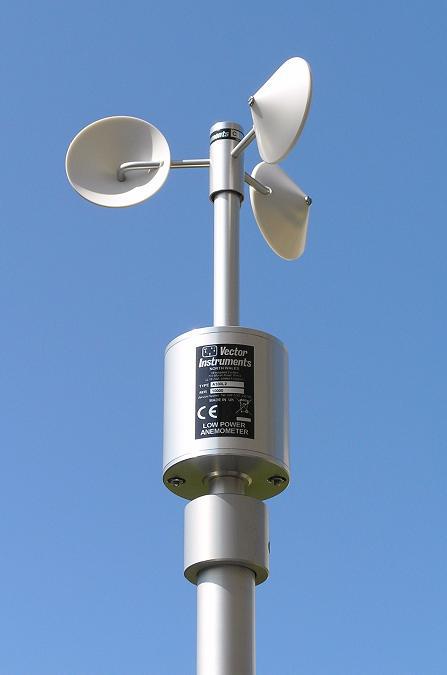How an Anemometer Can Improve Your Weather Surveillance System
How an Anemometer Can Improve Your Weather Surveillance System
Blog Article
Checking Out the Functions and Advantages of Anemometers for Weather Condition Fanatics and Specialists
Anemometers stand as instrumental tools in the world of climate monitoring, accommodating both lovers and experienced experts alike. These gadgets use a home window right into the dynamic world of wind patterns and speeds, supplying vital information for meteorological evaluation and forecasting. From cup anemometers to sonic anemometers, each kind brings its unique set of benefits and applications, clarifying numerous elements of weather. As we look into the functions and advantages of anemometers, a much deeper understanding arises not only of prevailing climate sensations however also of the broader effects for fields like wind power production and environmental study.
Importance of Anemometers in Climate Surveillance
Anemometers play an important function in climate tracking by offering precise dimensions of wind rate, assisting in forecasting and understanding weather patterns. These instruments, varying from typical mug anemometers to modern ultrasonic anemometers, are vital for meteorologists, scientists, and weather condition fanatics alike.

Sorts Of Anemometers and Their Applications
The most common kinds of anemometers include mug anemometers, vane anemometers, hot-wire anemometers, and ultrasonic anemometers. Cup anemometers are composed of three or 4 cups placed on horizontal arms that revolve with the wind, determining its speed. Vane anemometers, on the various other hand, use an easily rotating vane to straighten with the wind direction, supplying both wind speed and instructions dimensions.
Each sort of anemometer has its unique advantages and applications. Mug anemometers are suitable and durable for basic weather condition surveillance, while vane anemometers are favored for directional dimensions. Hot-wire anemometers are sensitive to low air rates, making them suitable for indoor atmospheres. Ultrasonic anemometers are non-intrusive and offer high accuracy, frequently made use of in research and specialized climate monitoring applications. Recognizing the characteristics and applications of each kind of anemometer is essential for picking one of the most suitable tool for specific weather condition keeping an eye on demands.
Advantages of Making Use Of Anemometers in Forecasting
In meteorology, the utilization of anemometers uses important advantages for enhancing the precision of weather forecasting. Anemometers gauge wind rate and instructions, giving crucial information for forecasting climate patterns. By including wind information into forecasting versions, meteorologists can much better comprehend the motion of weather systems, anticipate adjustments in weather, and issue more specific projections.
Additionally, anemometers play an important role in evaluating potential climate threats. Monitoring wind rates assists forecasters predict extreme weather condition events such as hurricanes, hurricanes, and wintertime storms with higher accuracy. This early warning system makes it possible for authorities to provide prompt informs and execute necessary precaution, reducing the dangers to life and building.
Furthermore, anemometers assist in maximizing sustainable power production. By assessing wind patterns, meteorologists can identify ideal locations for wind ranches and predict power output, adding to the efficient generation of wind power.

Anemometers in Wind Energy Manufacturing
Given the essential role anemometers play in giving accurate wind information for climate forecasting and threat evaluation, their relevance encompasses the realm of wind power manufacturing. Anemometers are necessary tools in the field of wind power, visit where the measurement of wind speed and direction is critical for identifying the expediency and performance of wind generator installments. By accurately measuring wind speeds at varying heights, anemometers help optimize the placement and design of wind turbines to make the most of energy output.
In wind farms, anemometers are strategically placed to collect real-time wind data that is used to assess the potential energy manufacturing of a site. This data is important in figuring out the financial stability of wind energy jobs and in forecasting energy generation to make certain grid security. In addition, anemometers aid in checking wind conditions to optimize wind turbine performance, avoid damages from high winds, and make sure the security of personnel working in the vicinity of wind generators.
Enhancing Weather Condition Comprehending With Anemometers

Anemometers why not try these out play a YOURURL.com key role in enhancing our understanding of microclimates. These local climate problems can differ dramatically from more comprehensive local projections, making it vital to have exact information for certain locations. anemometer. By tactically putting anemometers in various locations, researchers can collect thorough details on exactly how wind behaves in different terrains, city settings, or bodies of water
In addition, anemometers add to enhancing weather condition forecasting models by providing real-time information on wind actions. This info is especially important for predicting severe climate occasions, enhancing agricultural techniques, and sustaining markets like aviation and maritime navigating. On the whole, anemometers are very useful tools that enable us to dive much deeper into the complexities of weather systems, inevitably causing more better-informed decisions and exact forecasts.
Conclusion
In conclusion, anemometers play an important role in climate surveillance and projecting by gauging wind speed and instructions. They are essential tools made use of by climate enthusiasts and professionals to gather exact data for anticipating climate patterns and assessing possible effects. Anemometers also have applications in wind power production, additional highlighting their significance in both weather forecasting and renewable resource industries. Overall, anemometers add to enhancing our understanding of weather condition sensations and improving projecting capacities. anemometer.
From mug anemometers to sonic anemometers, each kind brings its distinct collection of advantages and applications, losing light on various facets of atmospheric problems. These instruments, varying from conventional mug anemometers to modern ultrasonic anemometers, are necessary for meteorologists, scientists, and weather enthusiasts alike. The most typical kinds of anemometers consist of mug anemometers, vane anemometers, hot-wire anemometers, and ultrasonic anemometers. Mug anemometers are robust and appropriate for basic climate surveillance, while vane anemometers are favored for directional dimensions. Anemometers are important tools in the field of wind power, where the dimension of wind rate and instructions is critical for identifying the feasibility and performance of wind generator installations.
Report this page